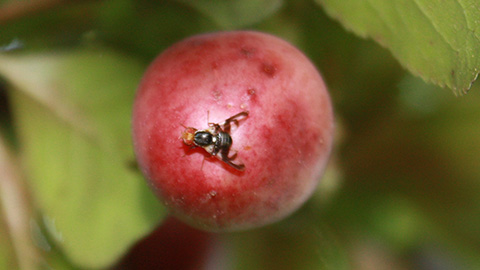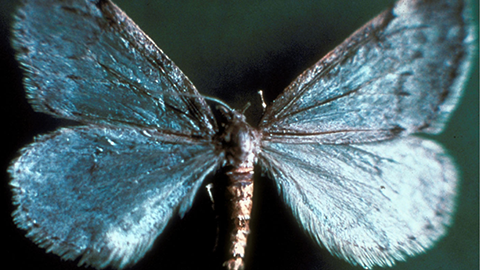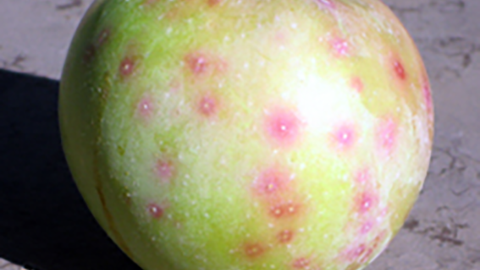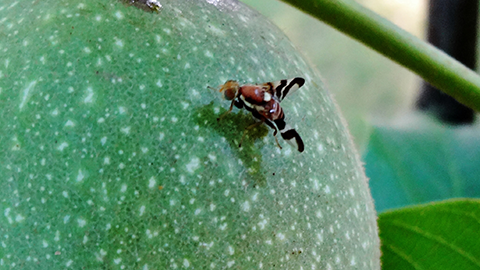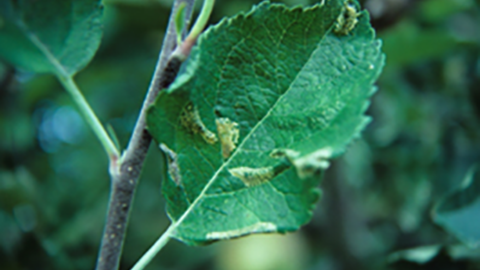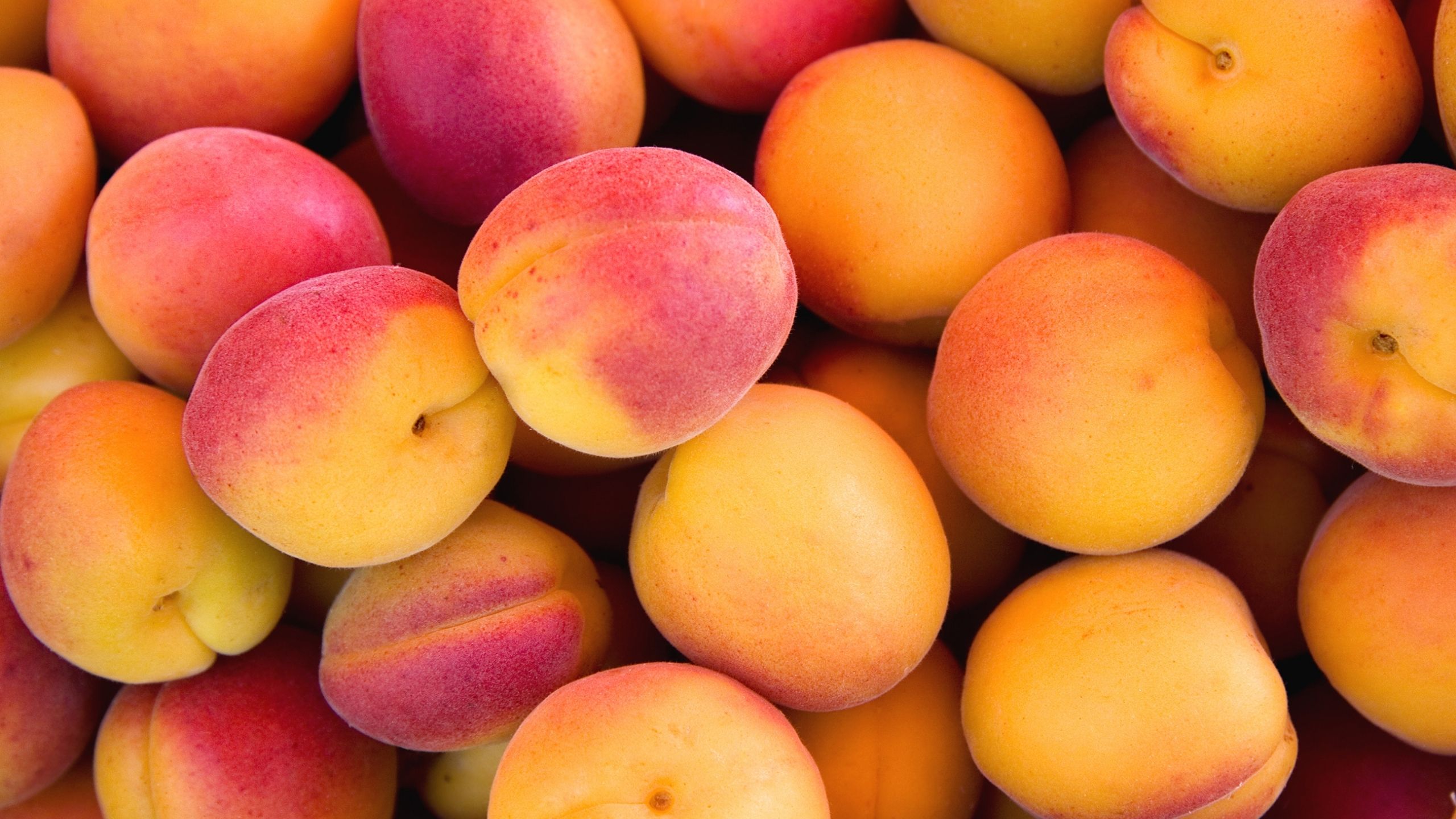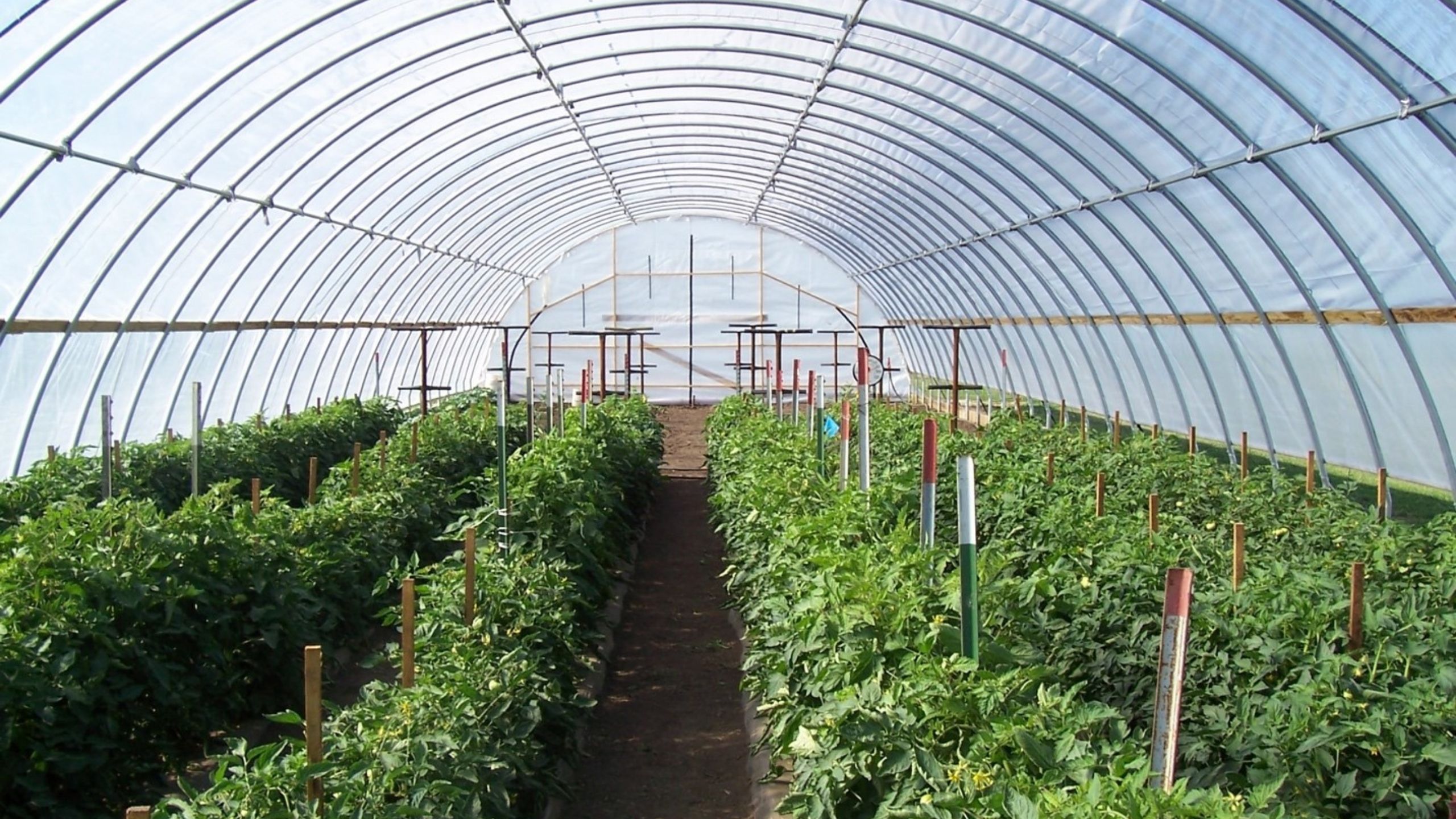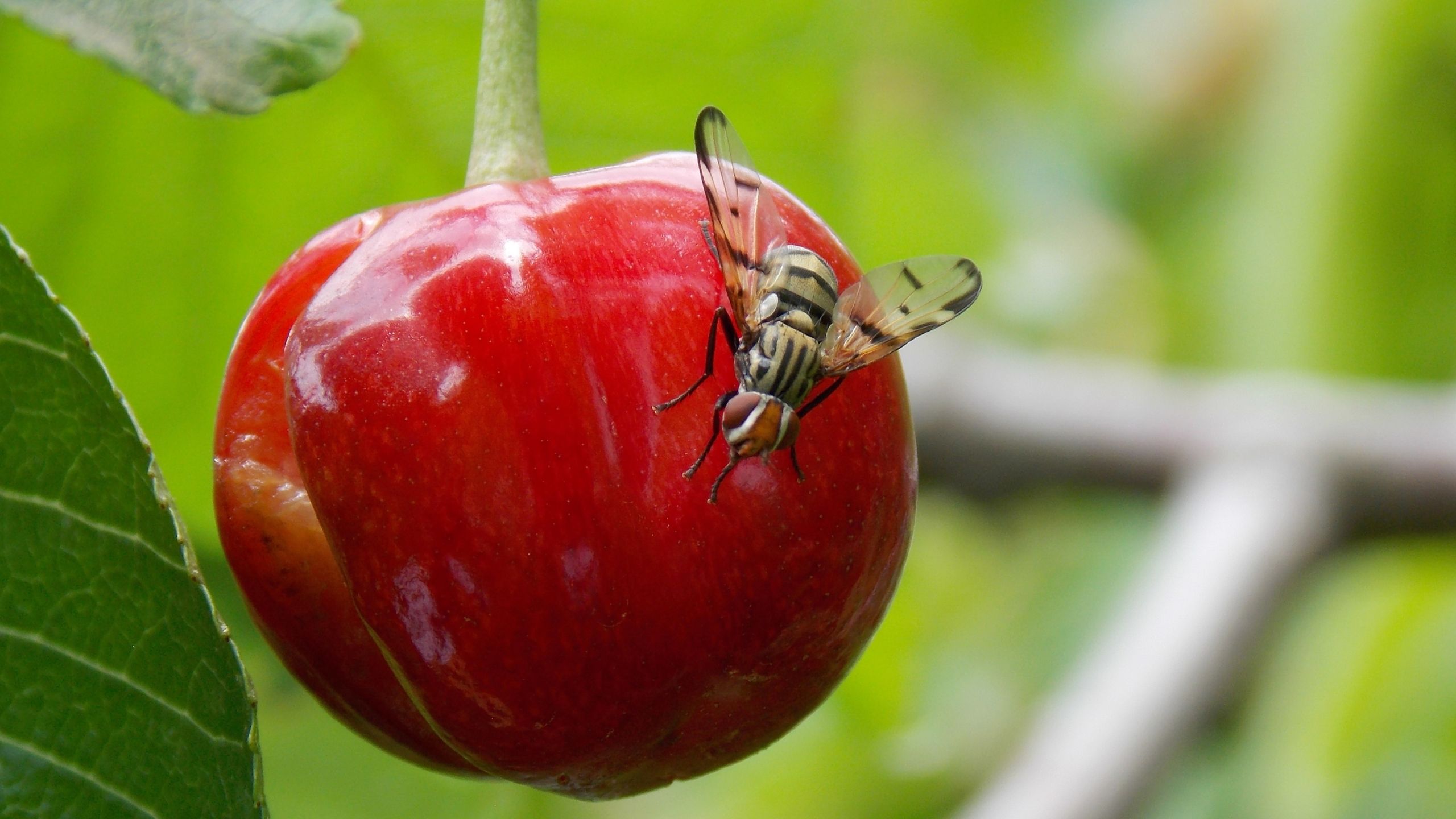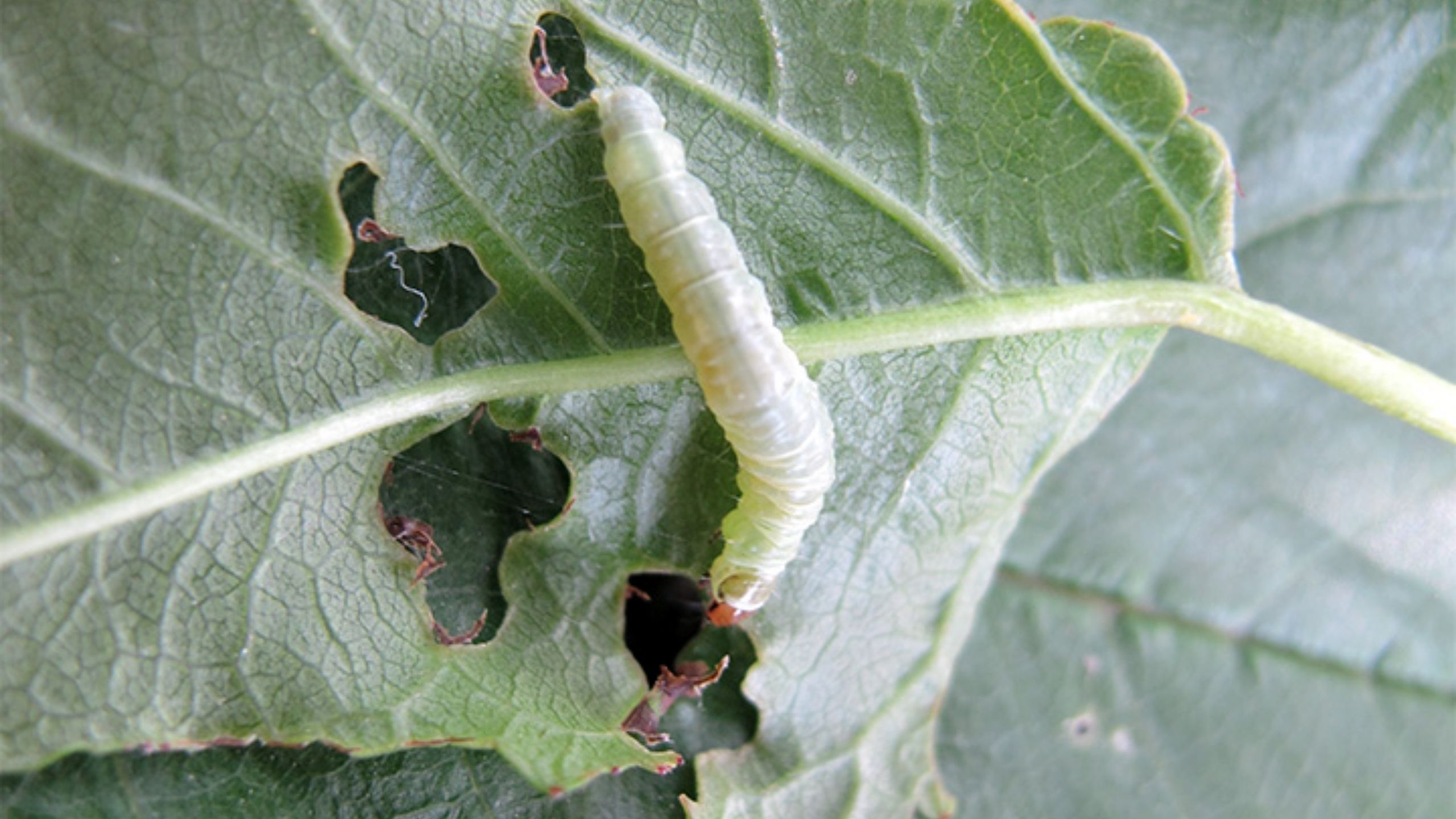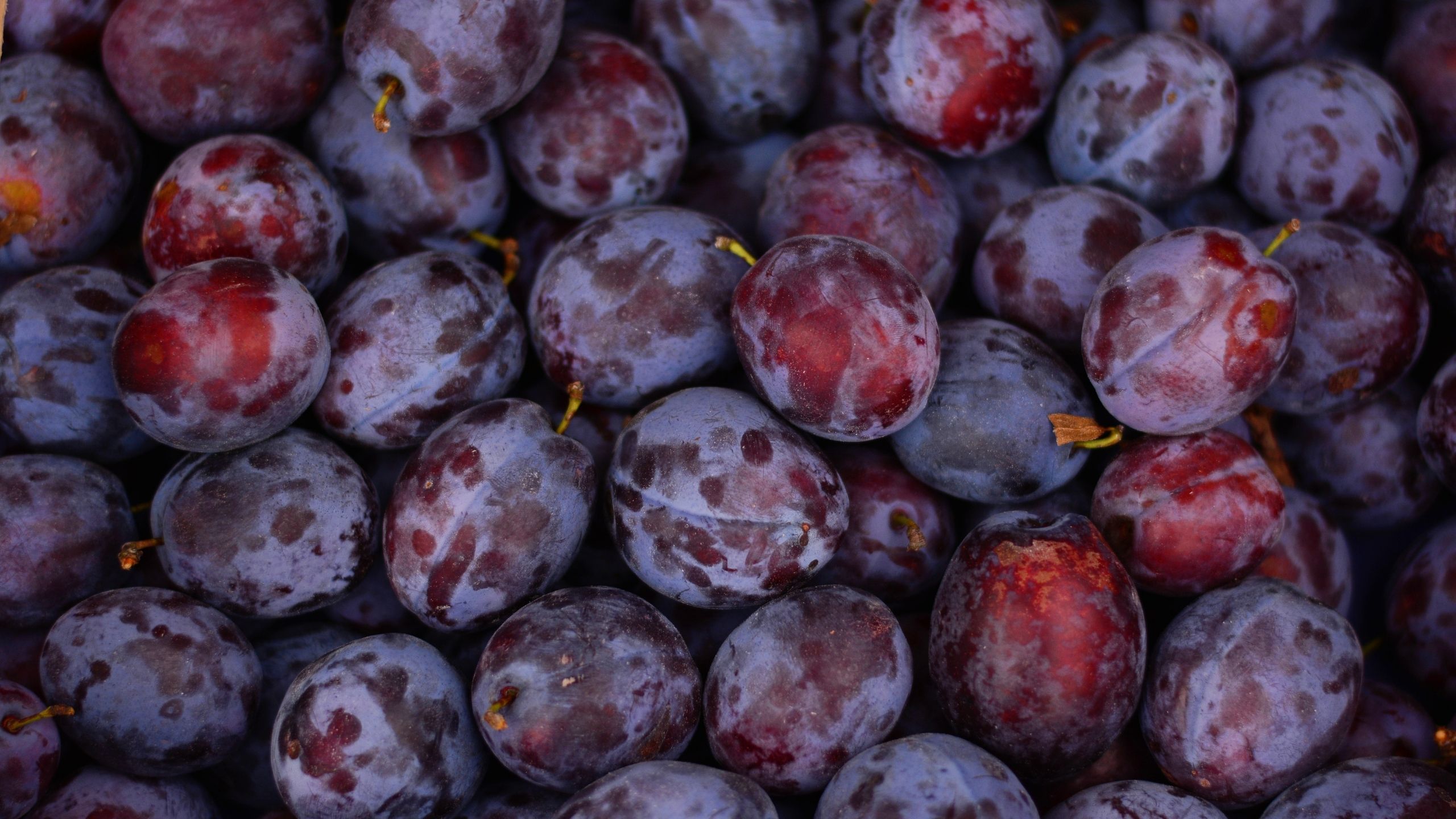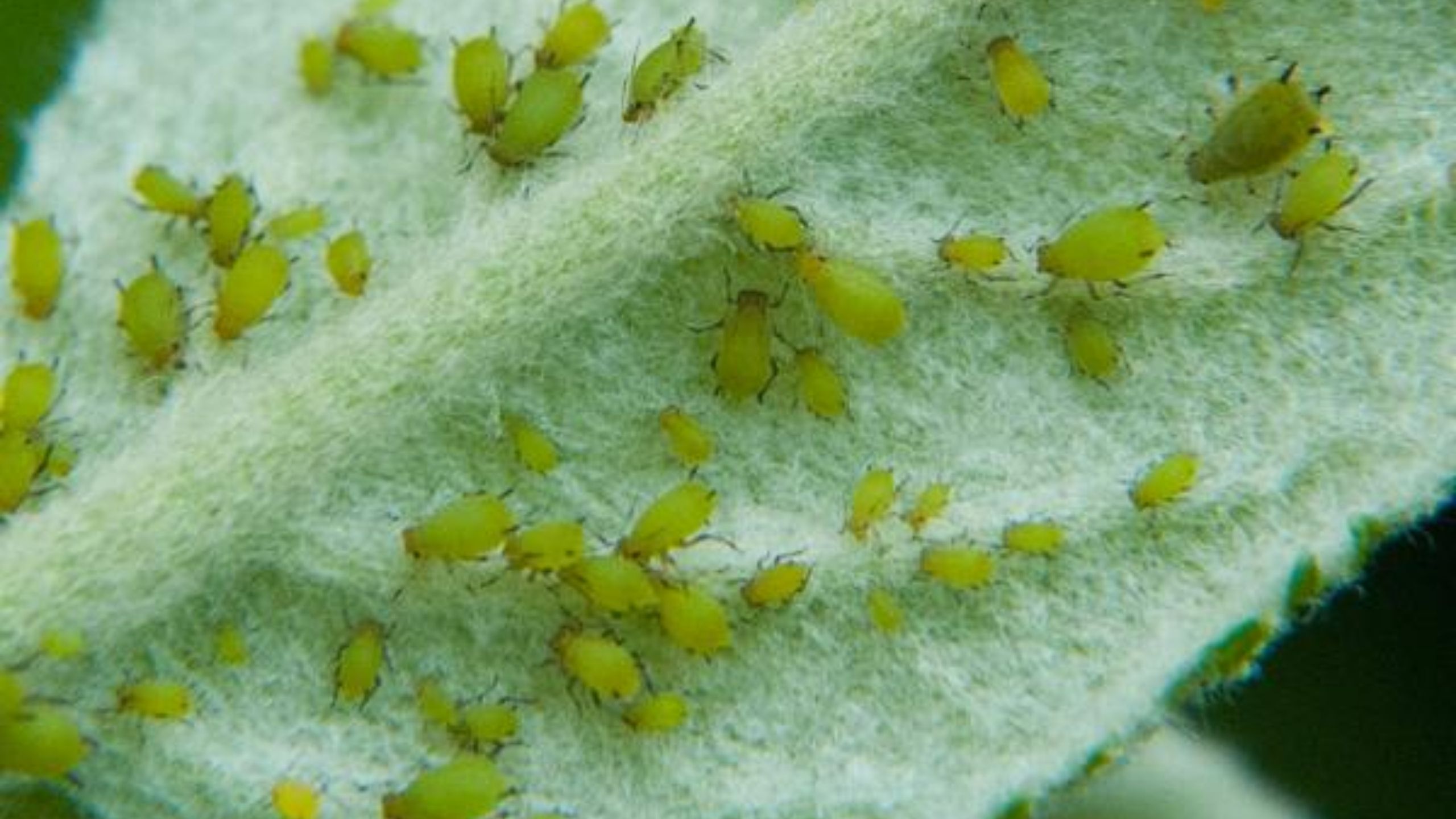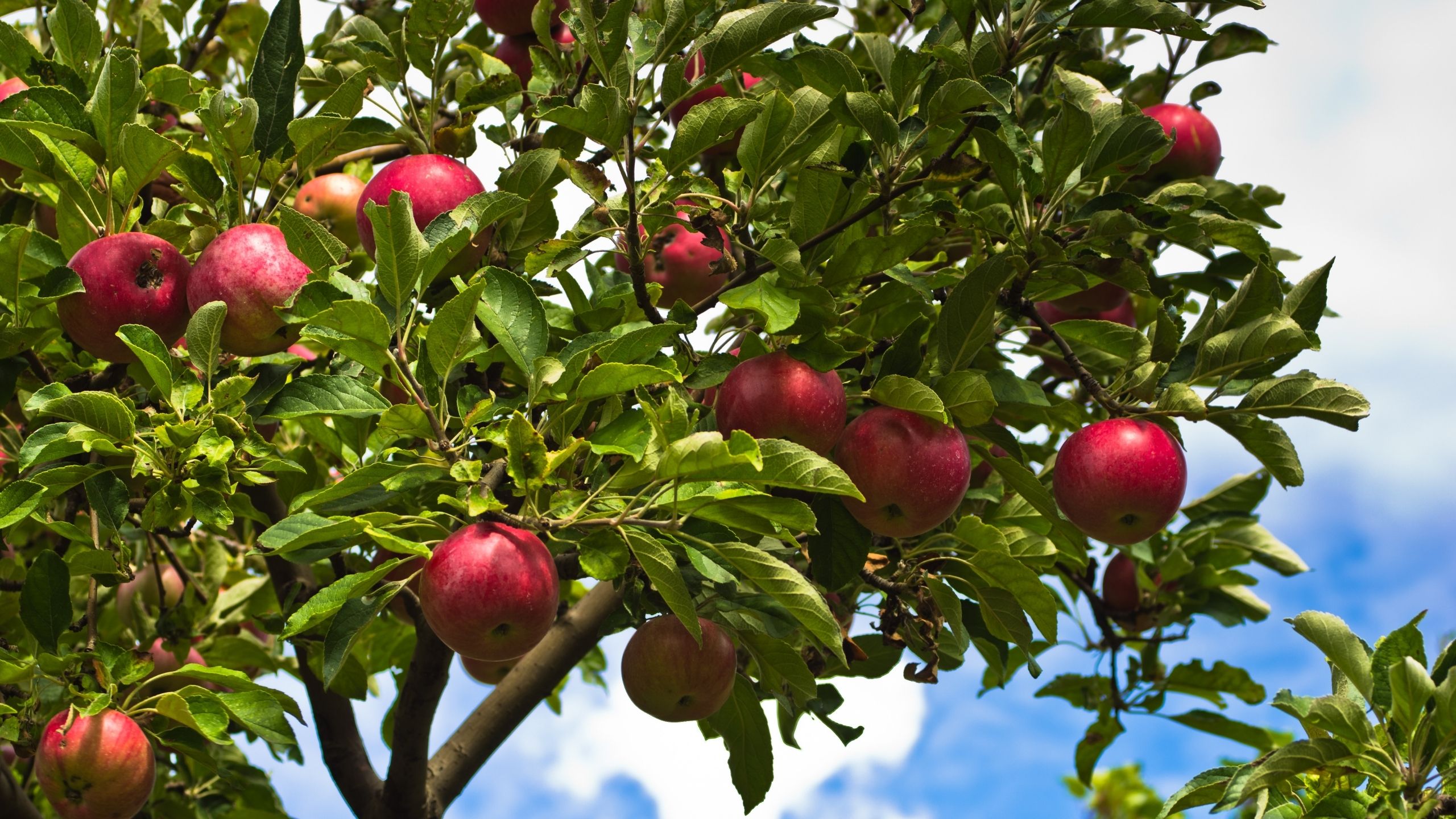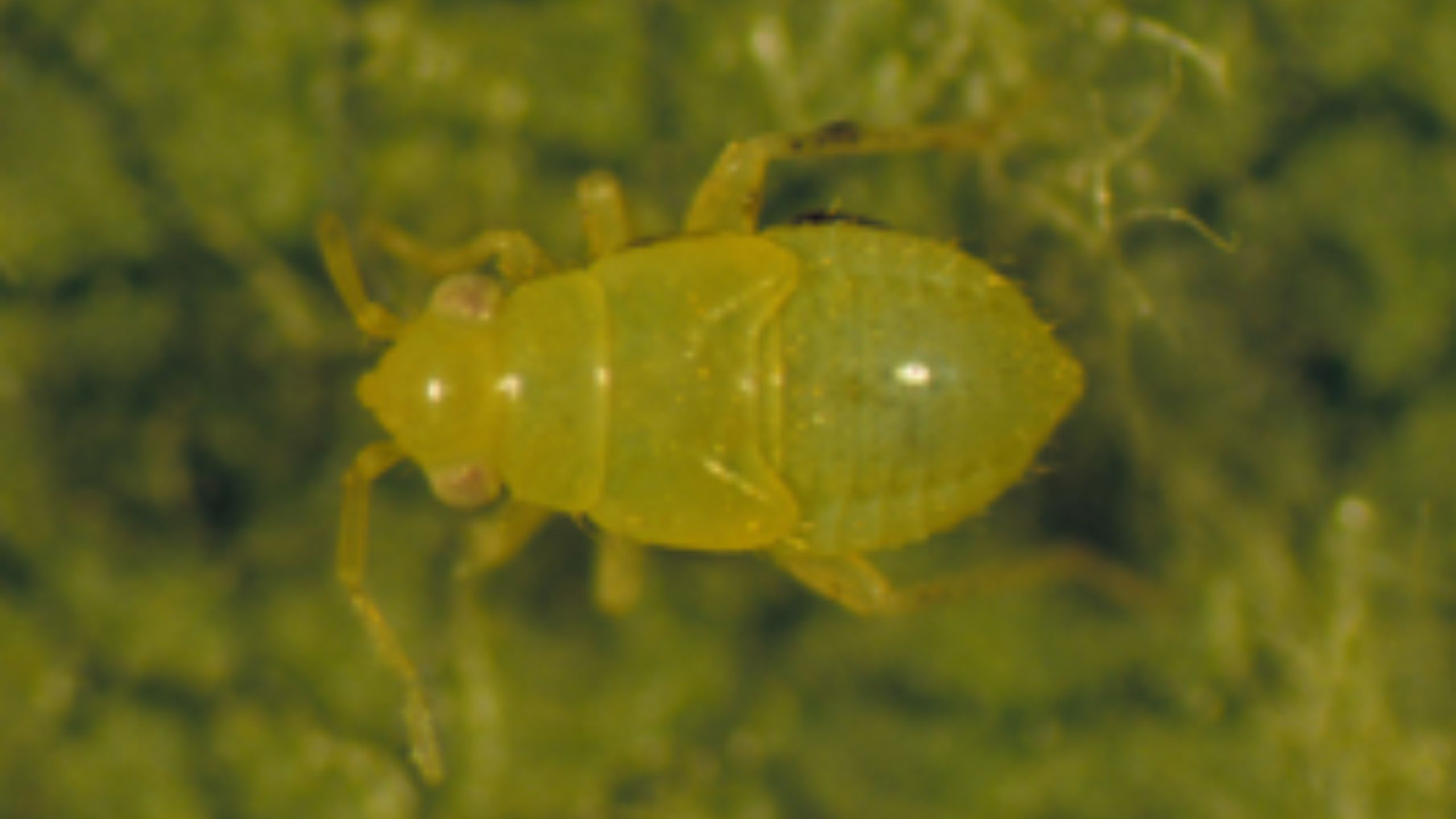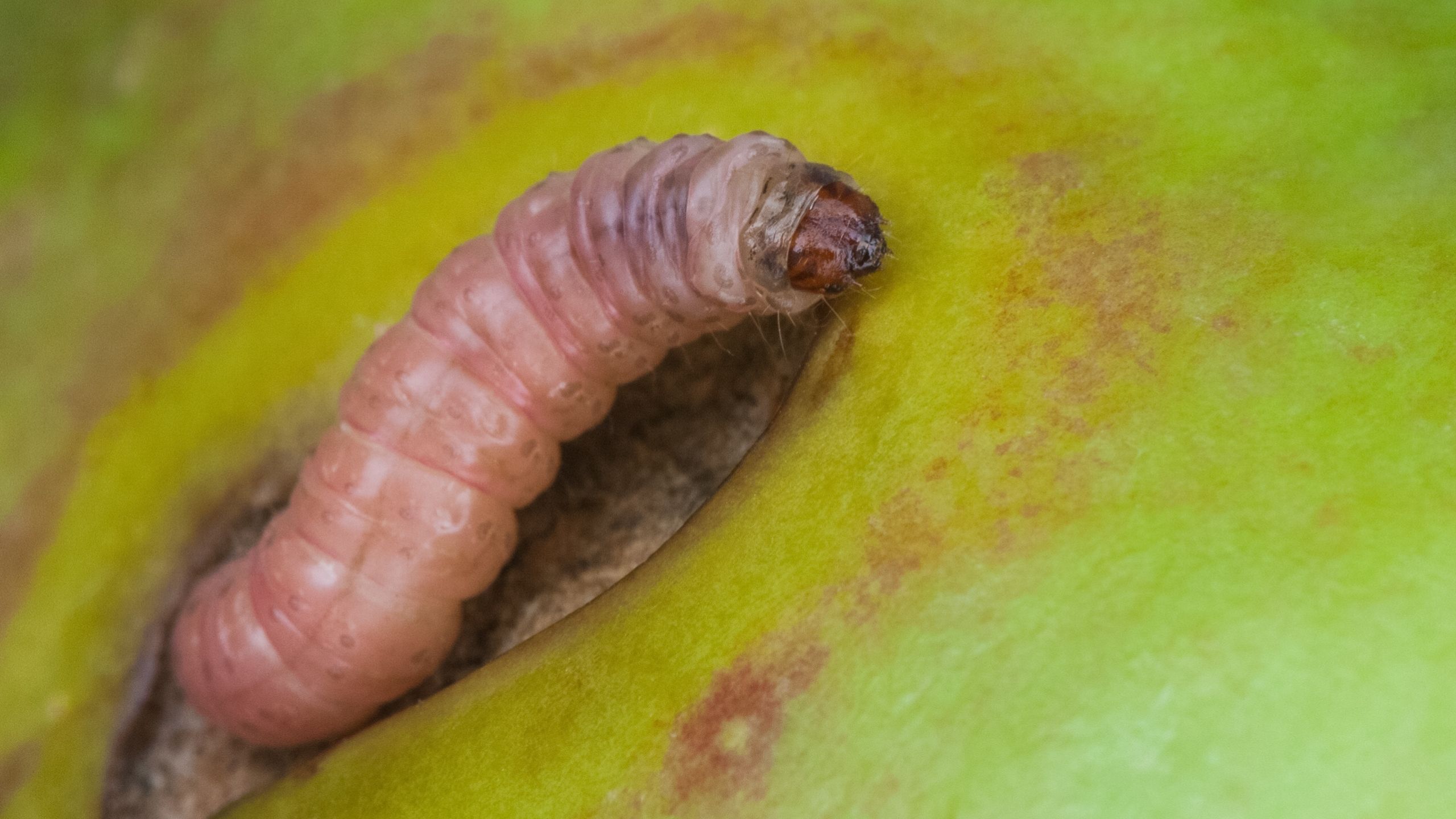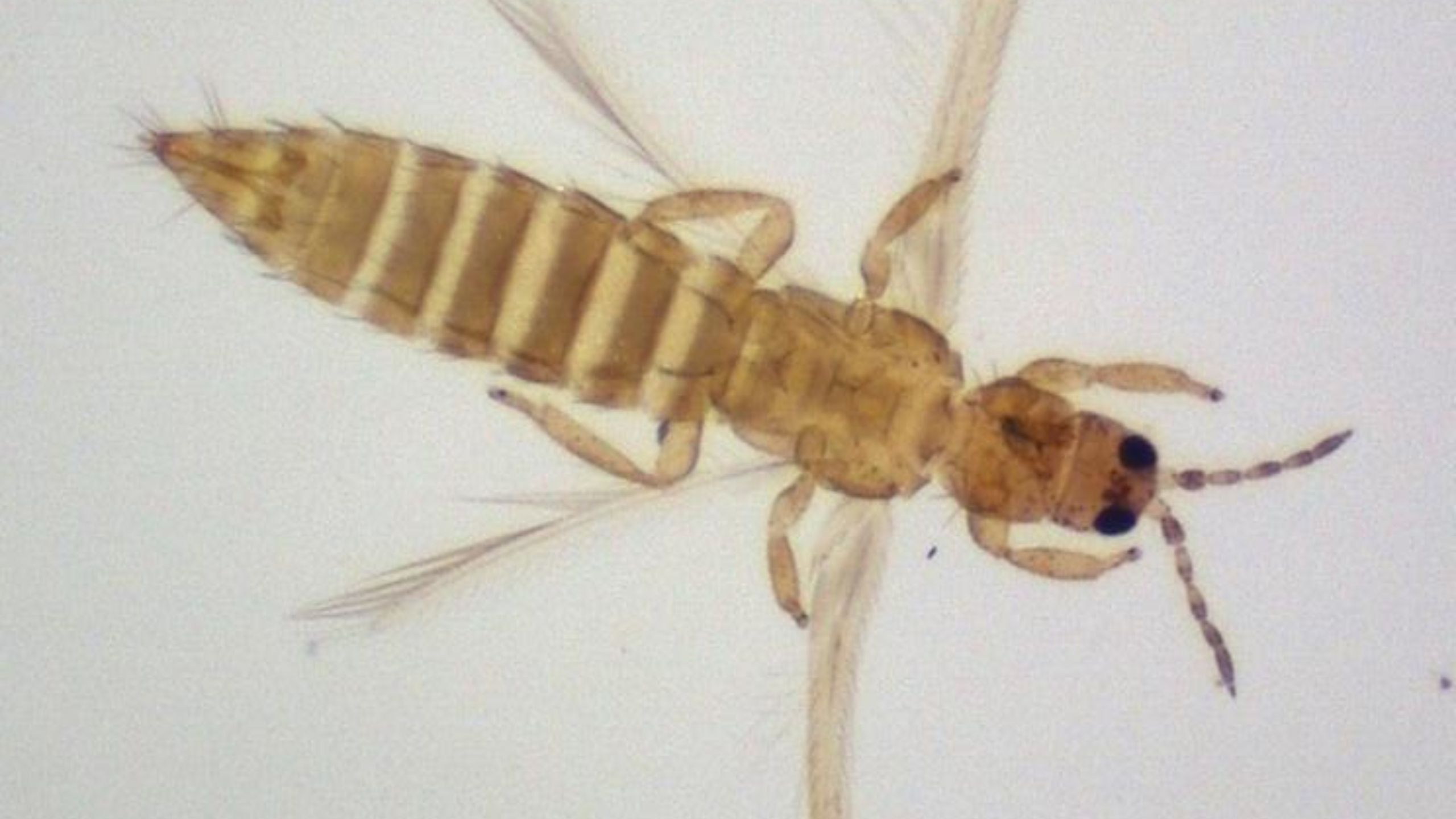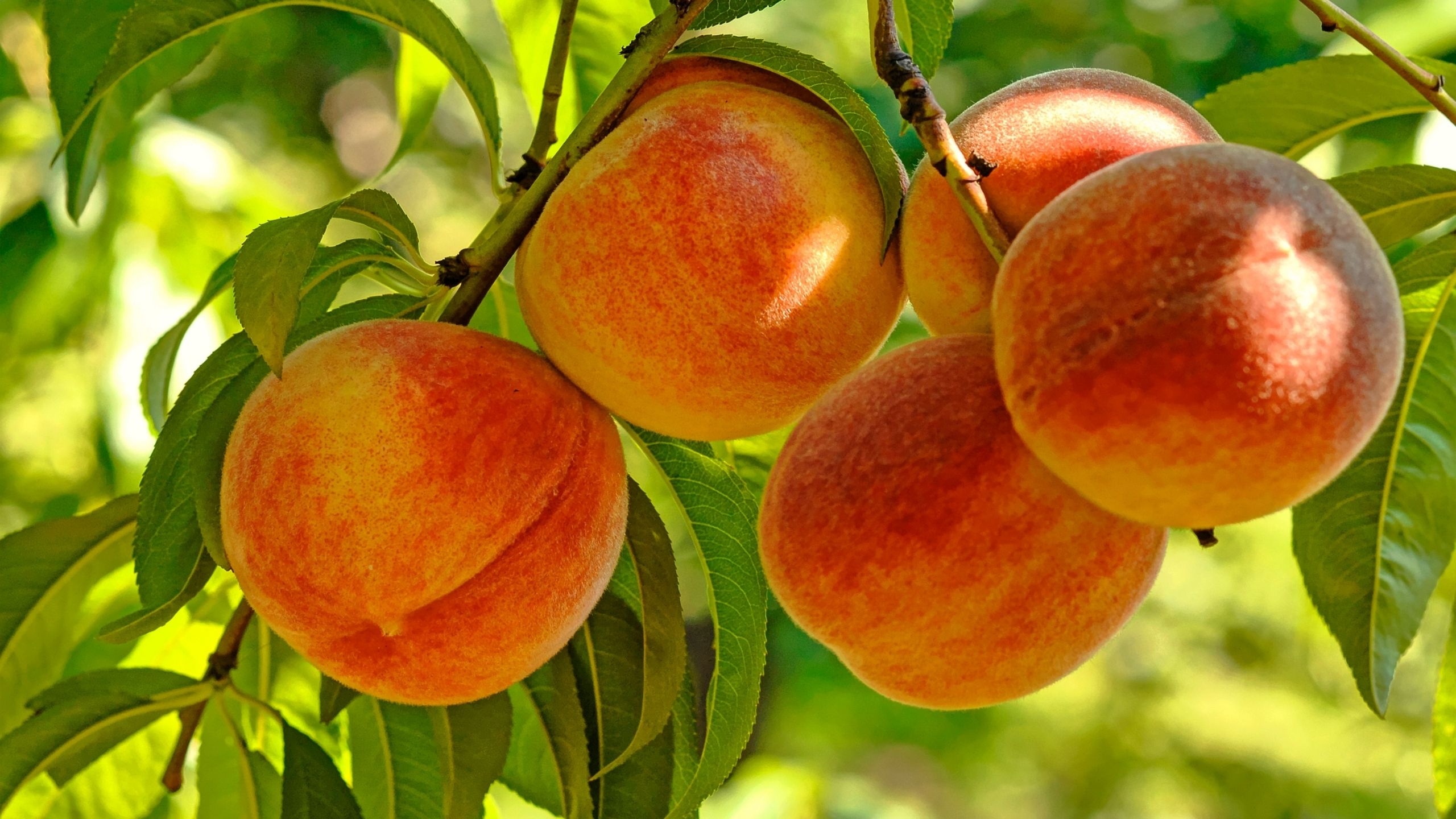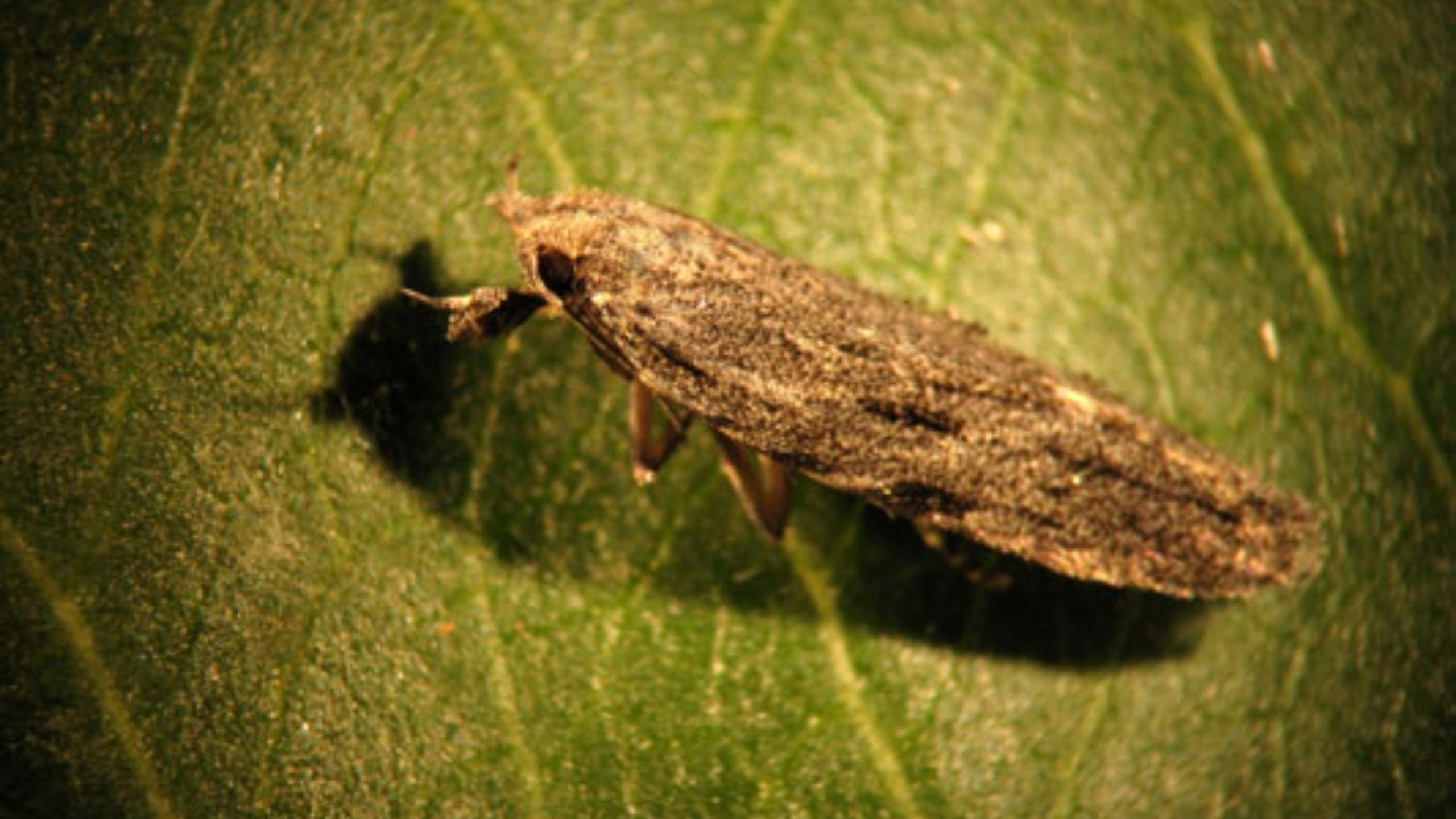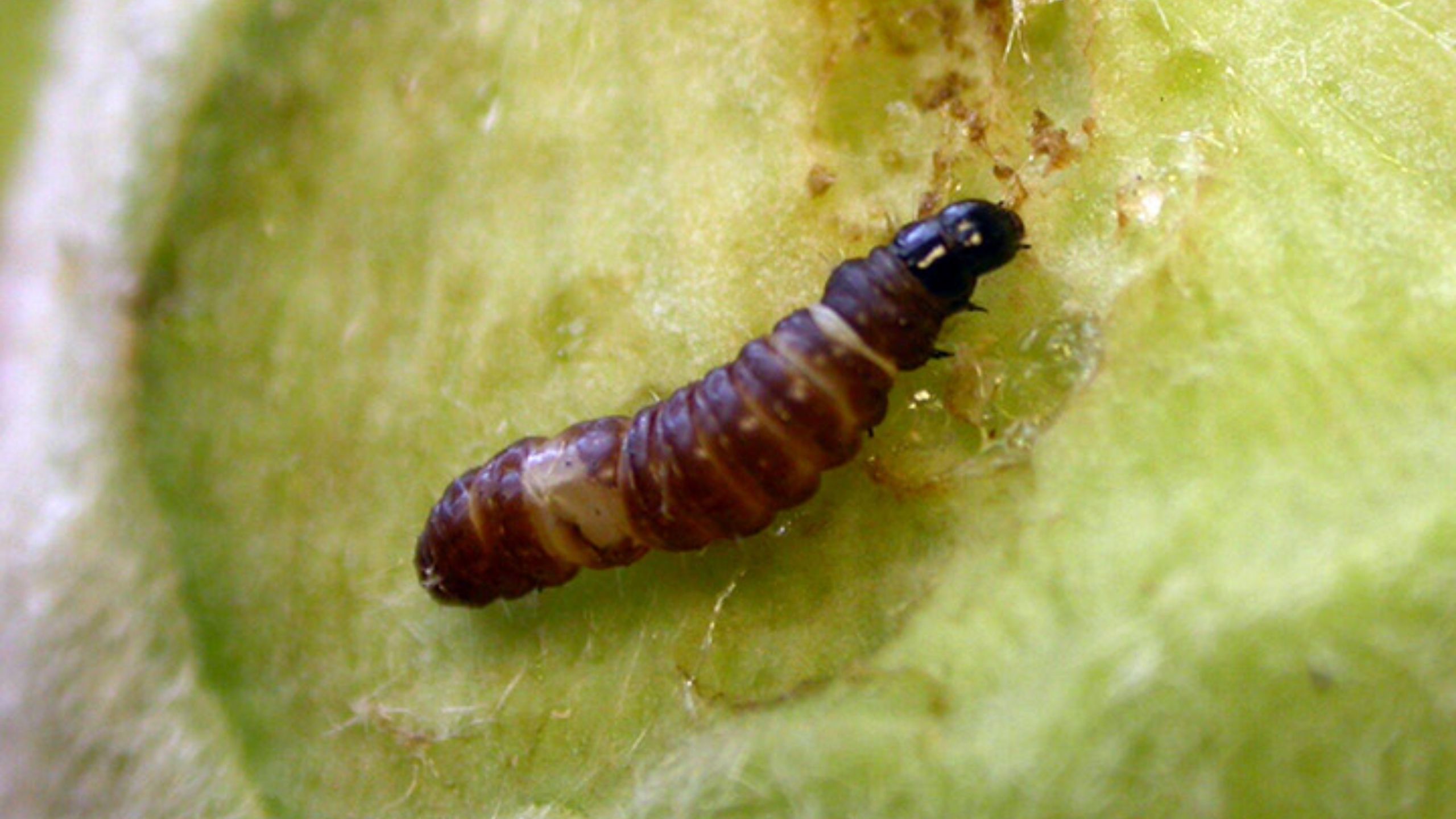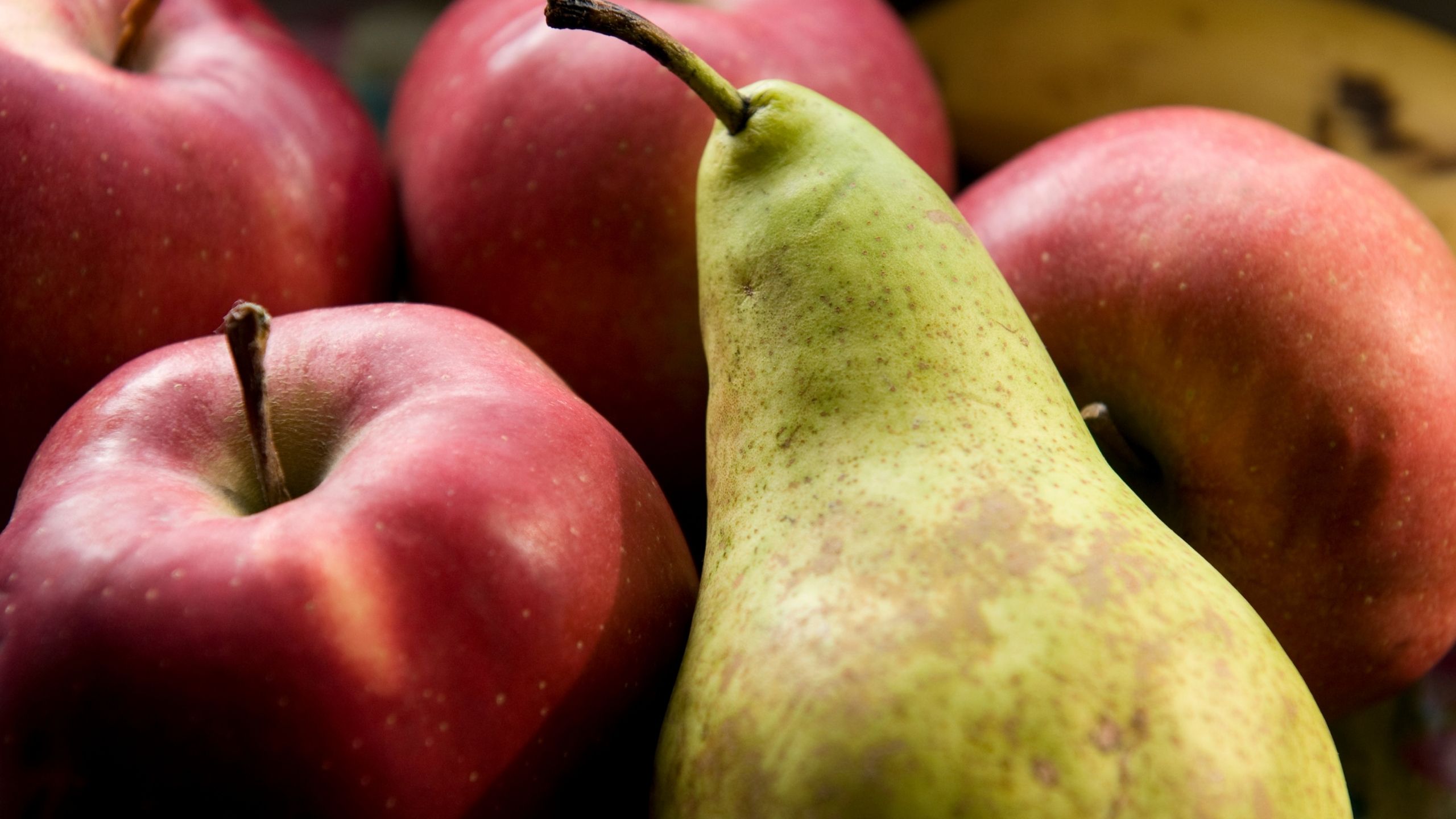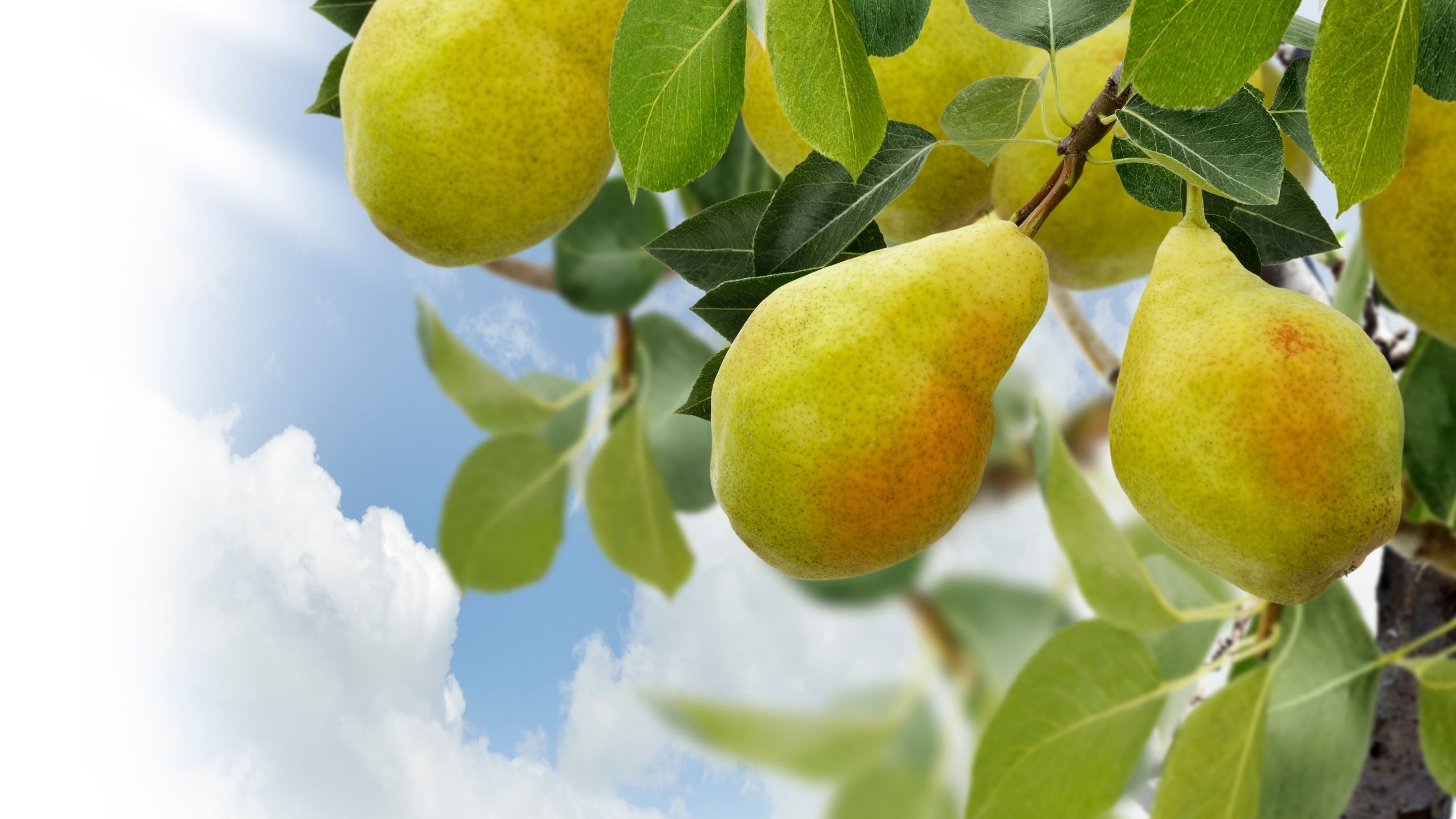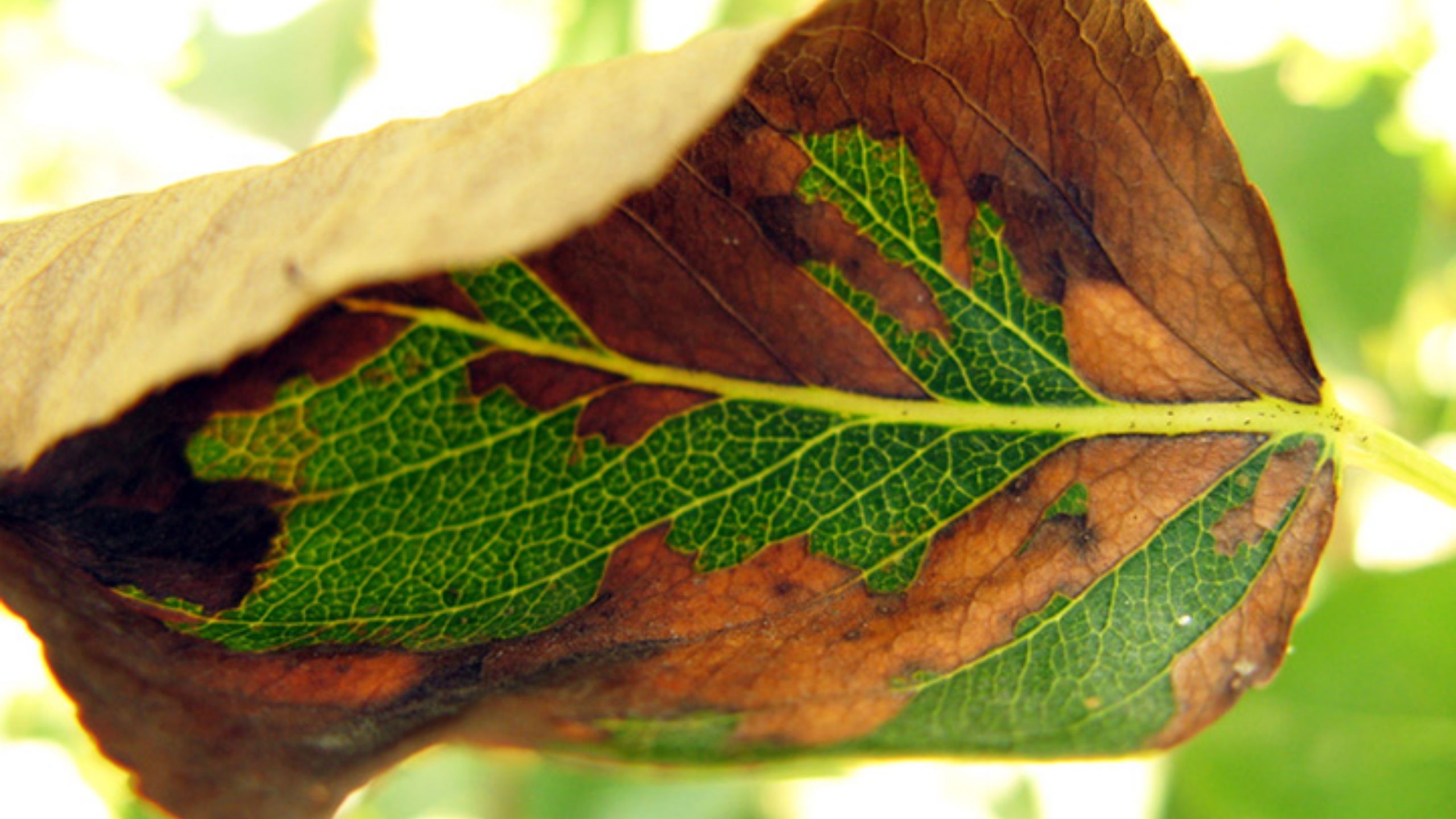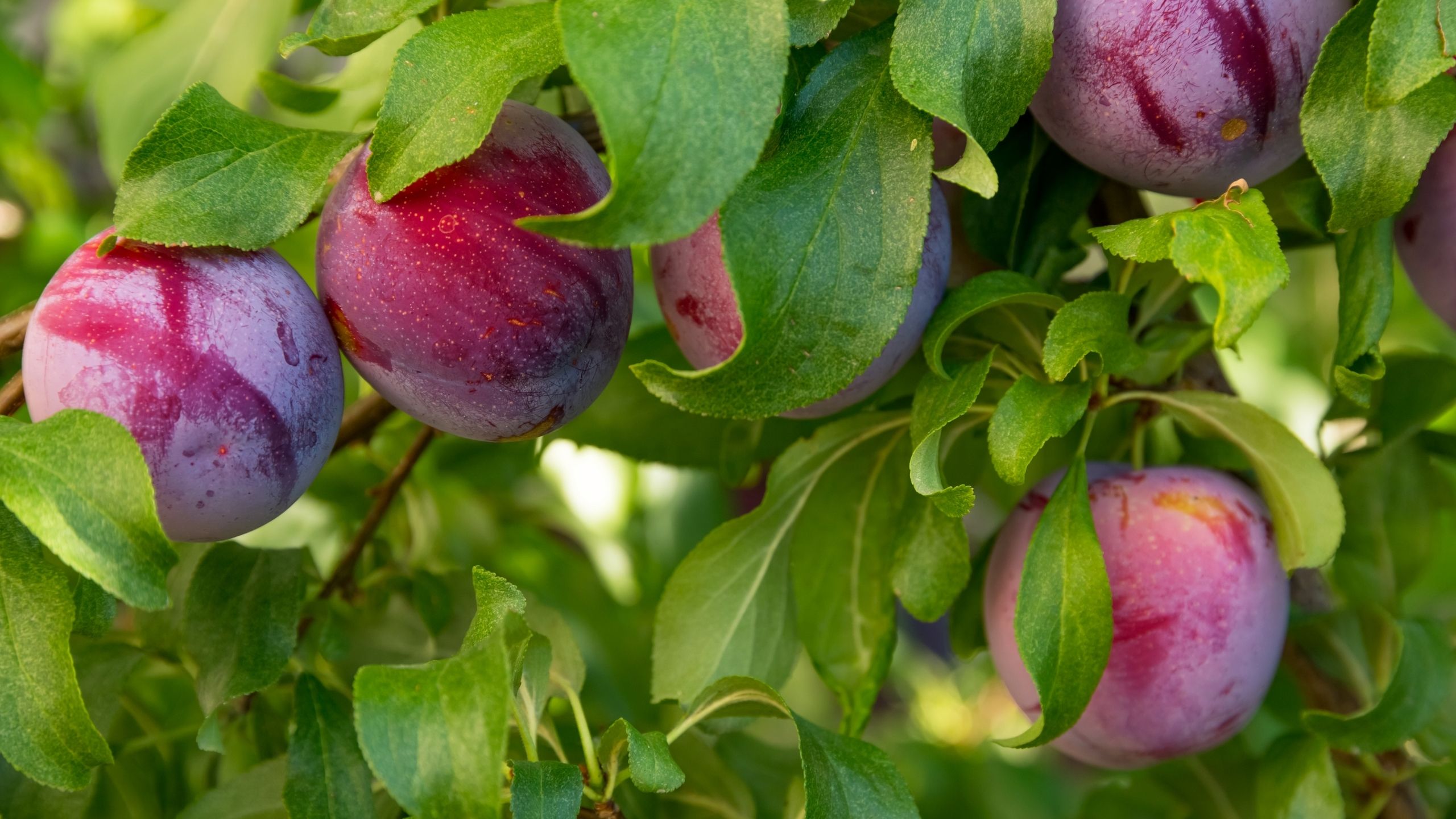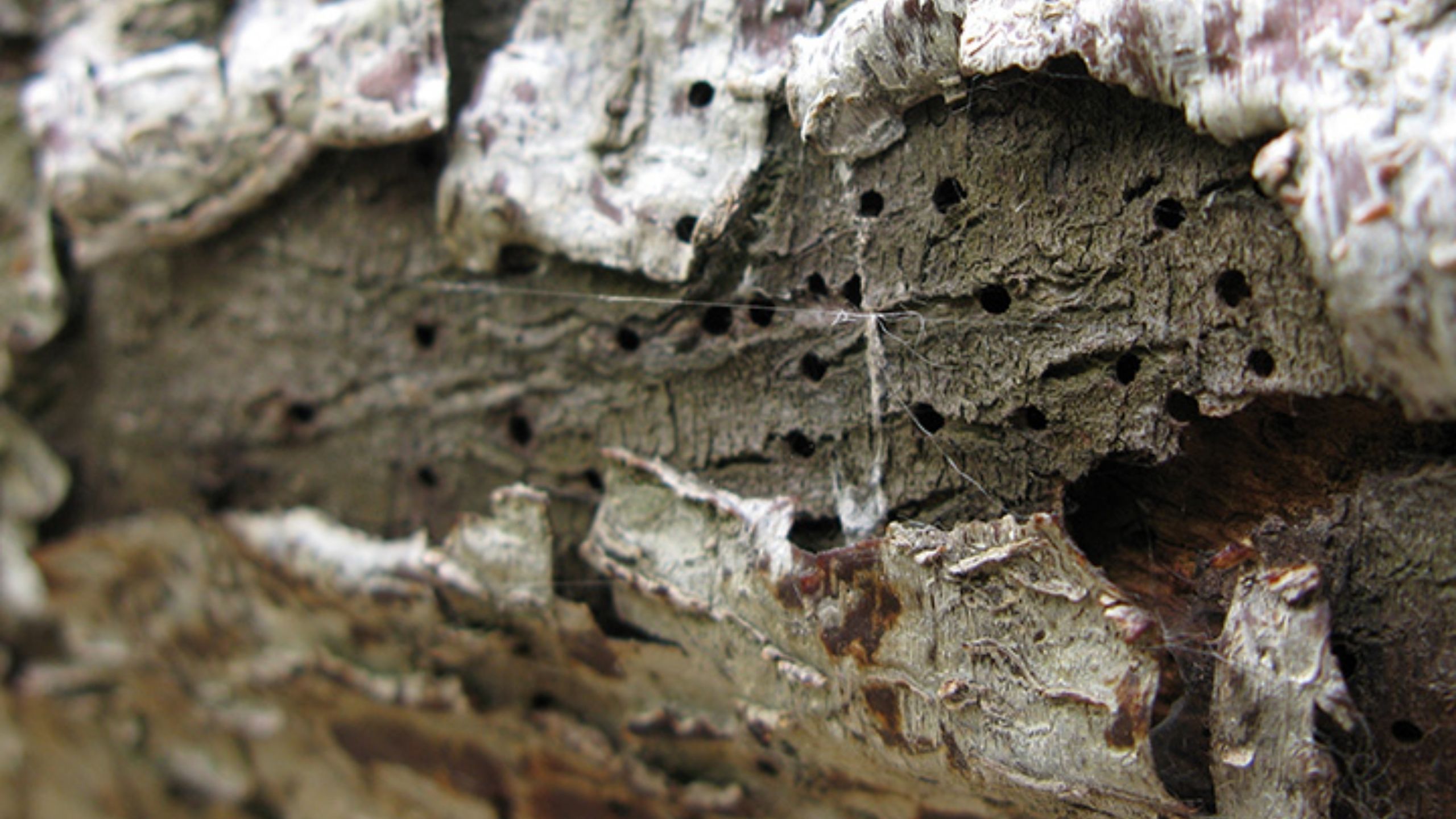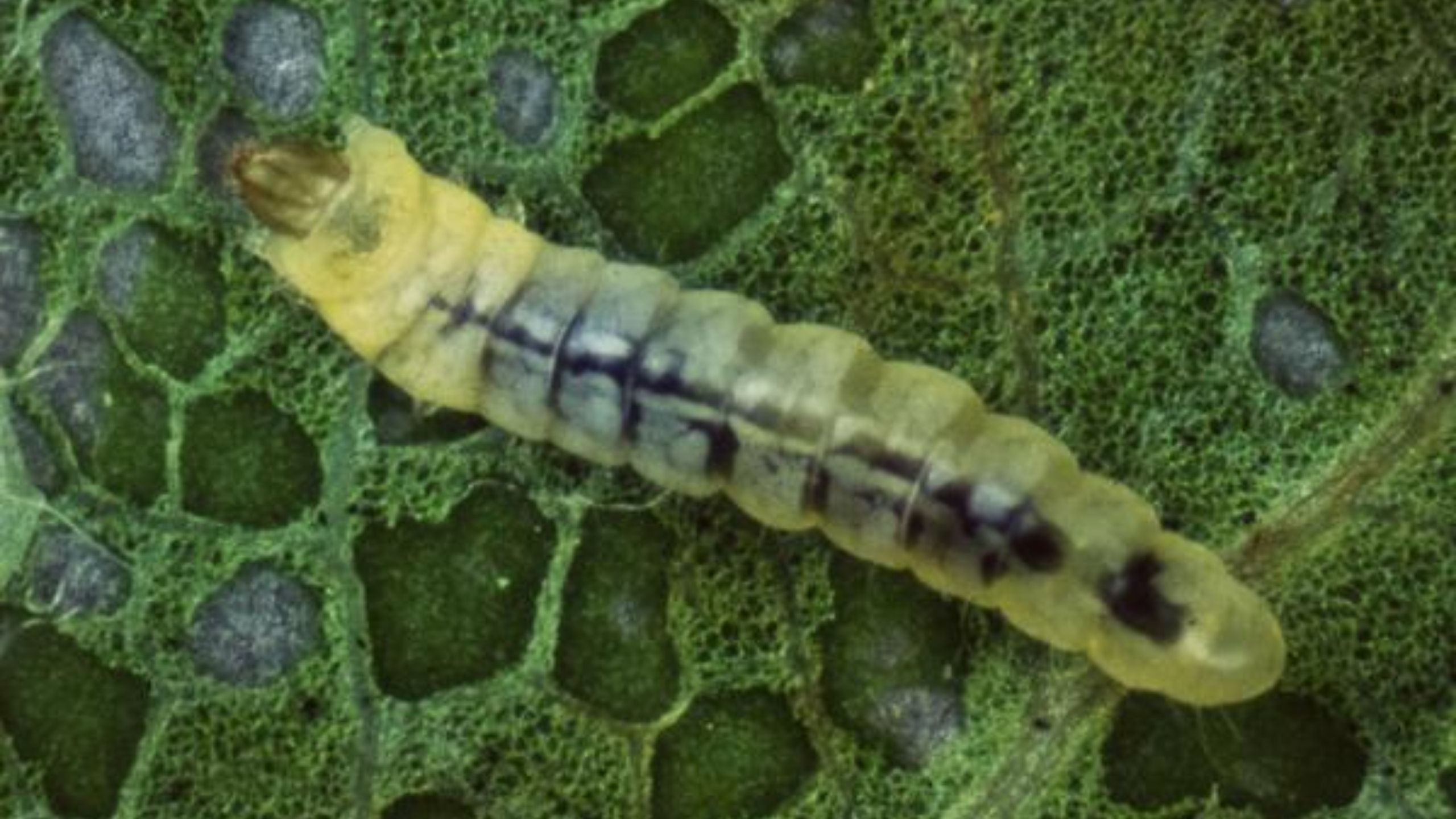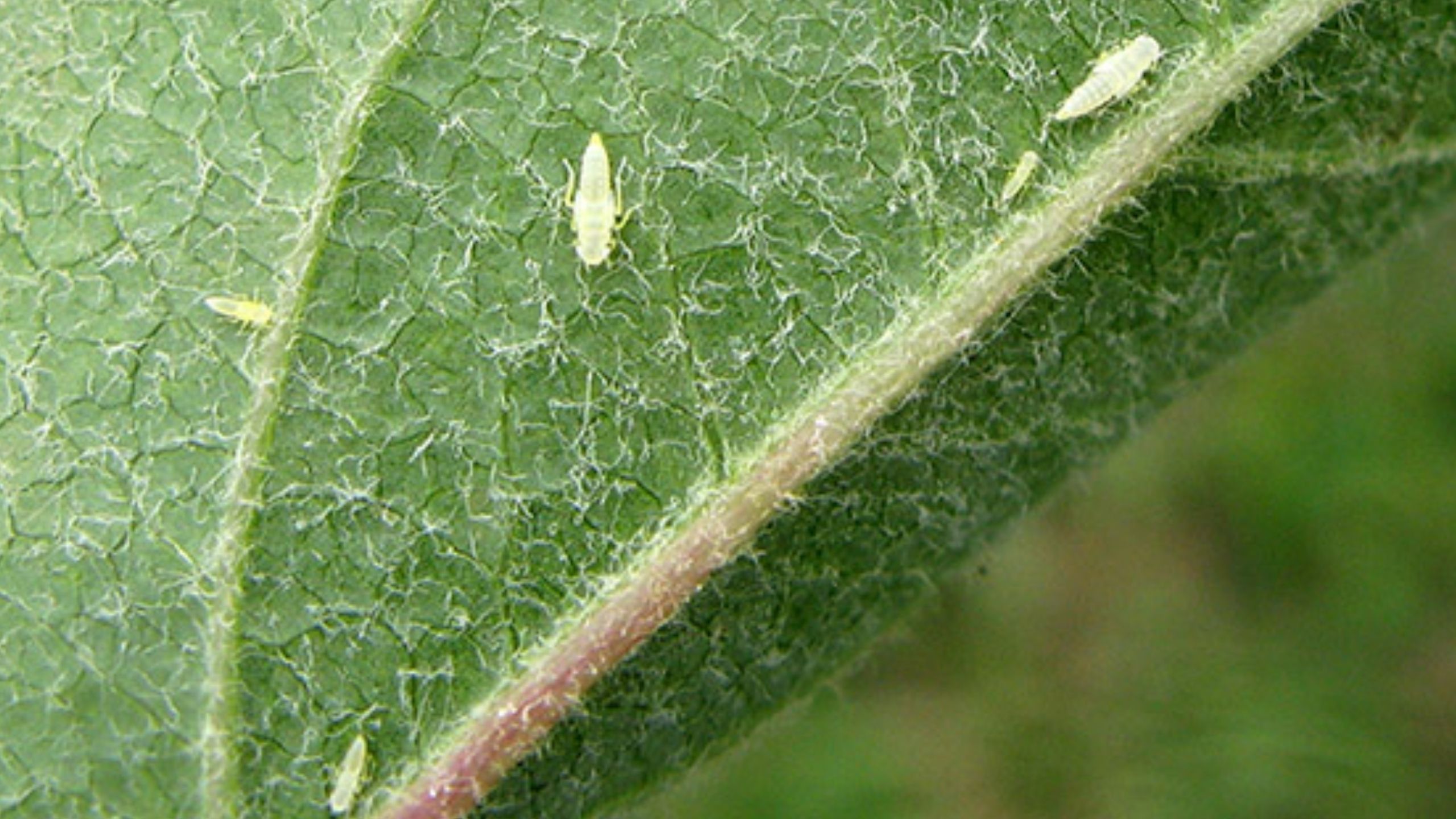White Apple Leafhopper
October 2011
Diane G. Alston, Entomologist (No longer at USU) • Michael E. Reding, Entomologist (No longer at USU)
Do You Know?
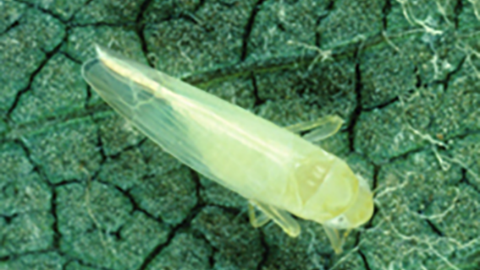
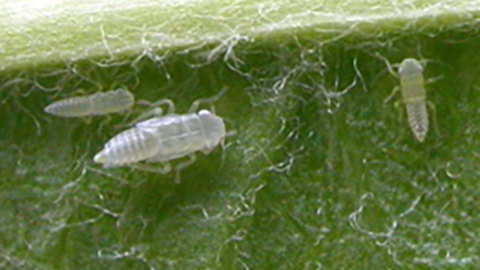
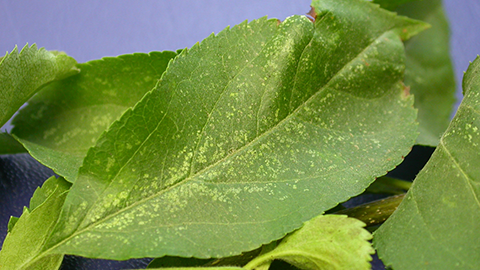
- White apple leafhopper is an indirect pest with two generations per year
- Decision for control should be based on economic justifications as well as orchard and other pest considerations
- White apple leafhopper can cause three types of injury:
- 1. White mottling of leaves and chlorophyll removal
- 2. Sticky black spots on leaves and fruit
- 3. Large populations at harvest can be annoying to pickers
- Early nymphal stages should be monitored from bloom through petal fall by observing 100 terminals or spur leaf clusters per 10-acre orchard
- First generation control should target nymphs at about petal fall
- White apple leafhopper has developed resistance to some insecticides
The white apple leafhopper (Order Homoptera, Family Cicadellidae) is the most common and serious of the leafhopper pests found on apple and other tree fruits. The rose leafhopper can be a pest of apple and pear in the Northwest. The two leafhopper species are similar in appearance, feeding habits, and life cycle and occur as mixed populations or individually in orchards. White apple leafhopper is native to North America and appears throughout fruit growing regions of the United States and Canada. It is primarily an economically important pest of apple and tart cherry in Utah. The insect completes two generations per year.
Plant Hosts
- Apple
- Cherry
- Plum
- Peach
- Hawthorn
- Pear (rose leafhopper)
Life History

Egg—Overwintering Stage

- Size and shape: about 1/25 inch (1 mm) long and oblong shaped
- Where: inserted just beneath the bark creating blister-shaped swellings on 1- to 5-year-old tree limbs
- Overwintered eggs are deposited by second generation females from the previous year
- Overwintered eggs hatch at about pink stage of apple and peak near bloom
Nypmh—Damaging Stage
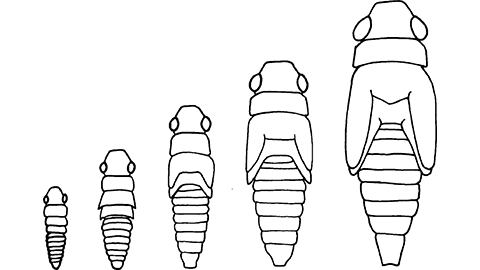
- Size and color: newly hatched nymphs are about 1/30 inch (0.8 mm) long and translucent white to yellow
- Where: first instar nymphs are found in orchards beginning in mid to late April
- Feeds on the undersides of leaves developing through five molts or instars
- Wing pad development is noticeable by the third instar
- As they grow they cast off their old skins, which can be seen hanging from the undersides of leaves
- By the fifth instar they are 1/10 inch long (2.5 mm) with obvious wing pads
Adult—Damaging Stage
- Size, shape, and color: about 1/8 inch (3.2 mm) long, elongated, and pale yellowish white
- Where: feeds on the undersides of leaves and easily flies away when disturbed
- Wings are held roof-like over the body
- Can live for several months
- Females lay about 60 eggs during their life span
- Appears in late May or early June in small numbers and first generation adult populations peak in midJune
- Females begin producing eggs about 10 days after emerging for a 3-week period
- Summer eggs are inserted into leaf petioles and veins and begin hatching in late July
- Nymphs and adults can be found in orchards from late July throughout the remainder of the season
- During the summer, generations and life stages overlap
- Adult densities peak in September around apple harvest time
- Overwintering eggs are deposited mainly during September until the first hard frost ends adult activity
Host Injury
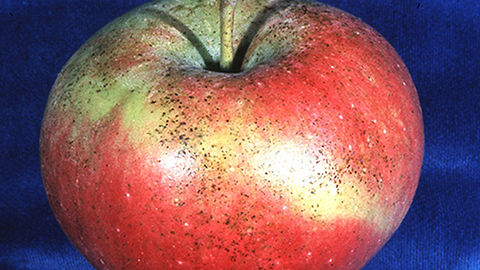
- Leafhopper nymphs and adults have piercing, sucking mouthparts and feed on leaves removing the cellular contents, including chlorophyll
- The larger second generation causes the most problems in orchards
- Leafhoppers cause three types of injury:
- 1. Feeding on leaves causes white speckling or mottling; leaves with heavy infestation become almost completely white; spur leaves in particular can be heavily damaged
- 2. Nymphs and adults excrete black drops while feeding on leaves and fruit; these drops are called “tar spots” and can contaminate fruits
- 3. Large second generation populations at harvest time fly into the faces and noses of pickers and can be a nuisance pest
Timing Control
First Generation
- Although second generation densities tend to be much larger, control should usually target first generation nymphs to prevent a large second generation
- Careful scouting for first generation leafhopper nymphs should begin at bloom and continue through early June, or post petal fall
- A total of 100 terminals or spur leaf clusters should be examined in a 10-acre or smaller orchard
- Examining 10 terminals on 10 randomly selected trees per block should provide an adequate assessment of leafhopper populations (see White Apple Leafhopper Sampling Form)
- Observe undersides of leaves as nymphs will congregate there
- Nymphal instars 1-4 are easiest to control so they should be targeted for monitoring and control decisions
- An action threshold of 0.5–1.0 early nymphs (instars 1–4) per terminal or spur leaf cluster during the first generation (at about petal fall) is recommended if there is concern about crop damage or flying adults annoying pickers during the second generation in September
Second Generation
- White apple leafhopper populations should again be monitored in August during the second generation by inspecting terminals for nymphs and adults (see White Apple Leafhopper Sampling Form)
- Adults can also be sampled with a beating tray
- Orchards with nearby sources of white apple leafhopper, such as unsprayed orchards or backyard trees, should especially be monitored for reinfestation by adults
Management
Because white apple leafhopper is an indirect pest that causes minimal reductions in fruit size, quality, and return bloom in otherwise healthy trees, it should only be controlled when necessary. The key to management of the white apple leafhopper is to prevent the second generation from reaching nuisance levels by controlling the first generation. Although the first generation population may be small and nonthreatening, even low numbers of young nymphs at petal fall (0.5–1.0 early nymphs per terminal) can result in problems for pickers at harvest. Waiting until late in the season to control the leafhopper may require several sprays and still not result in effective control. Also, timing of late season sprays may be more difficult because of chemical residue concerns (i.e., required preharvest intervals). Furthermore, these adults will lay eggs that overwinter and contribute to numbers the following year.
Multiple Stresses
Orchard factors such as tree vigor, tree age, drought stress, and injury by multiple pests, should be considered when deciding if leafhopper control is necessary:
- In young trees with small canopies, substantial loss of leaf chlorophyll could stunt growth
- In low vigor trees with a low leaf-to-fruit ratio, moderate to heavy injury may reduce fruit set, size, quality, and return bloom
- Trees susceptible to drought, such as those growing in light soils or during extremely high temperature periods, should be considered for leafhopper control
- If multiple foliar pests occur such as mites, leafminers, aphids, and leafhoppers, their multiple effects should be considered
Insecticide Resistance
White apple leafhopper appears to have developed resistance to some organophosphate and organochlorine insecticides commonly used in orchards. Variable control levels of 40–70% kill have been reported for diazinon, azinphosmethyl (Guthion), and phosmet (Imidan).
- Avoid overuse of any one chemical class for leafhopper control
- If using insecticides, time application for optimal leafhopper control, which is usually when nymph instars 2–4 are predominant; do not wait for codling moth timing to apply insecticides if this is past the optimal time for leafhopper control
- One well-timed spray during the first generation may reduce resistance selection pressure as compared to multiple sprays during the second generation
Control of First Generation
White apple leafhopper is best controlled around petal fall when the majority of nymphs are still small (instars 1–4) and egg hatch is nearly complete. Larger nymphs are increasingly difficult to control and adults often escape by flying away. When an action threshold is reached, a treatment decision should be made based on the biological factors described above (multiple stresses, insecticide resistance, biological control) and economic factors, such as market destination and crop value. The following are the most effective chemicals for control:
- acetamiprid (Assail)
- buprofezin (Centaur)
- carbaryl (Sevin)H - carbaryl applied for thinning can suppress leafhoppers if spray coverage is adequate
- clothianidin (Clutch)
- diazinon (Diazinon)R - resistance to diazinon is documented in Utah
- endosulfan (Thionex)R
- fenpropathrin (Danitol)R - toxic to predatory mites
- flubendiamide/buprofezin (Tourismo)
- formetanate hydrochloride (Carzol)R - toxic to pollinators; do not use after petal fall
- imidacloprid (Admire)- toxic to pollinators, use only after bees have been removed from the orchard
- imidacloprid/cyfluthrin (Leverage)R - toxic to predatory mites
- indoxacarb (Avaunt)
- kaolin clay (Surround)O, H - multiple applications required for good contro
- thiamethoxam/chlorantraniliprole (Voliam Flexi) - toxic to pollinators
- thiacloprid (Calypso)
OOrganic (OMRI approved) products available
HHomeowner products available
RRestricted use insecticide; requires a pesticide applicators license to purchase and apply
All brands are registered trademarks. Examples of brands may not be all-inclusive, but are meant to provide examples of products registered in Utah. The availability of pesticides may change. Always read the label for registered uses, application and safety information, and protection and pre-harvest intervals.
If Sevin is used for thinning fruit and tree coverage is adequate, then an additional first generation treatment should not be needed. Pyrethroids should be avoided because of their toxicity to beneficials. Codling moth cover sprays are often too late to provide good control of leafhopper nymphs.
Control of Second Generation
Second generation leafhoppers should be monitored even though an orchard was cleaned up by first generation control. Adults fly easily and can reinfest a clean orchard if infested ones are nearby. Optimum timing for the second generation is generally more difficult because the vulnerable stages are spread out over time. Control can be achieved by a split application: one spray timed for first emergence of the second generation nymphs, the second spray 2 weeks later. This is an expensive option. If only one spray is to be applied, it should be timed for about 2 weeks after the second generation nymphs emerge. Avoid insecticides that are toxic to beneficial insects and mites, and thus disruptive to an IPM program.


